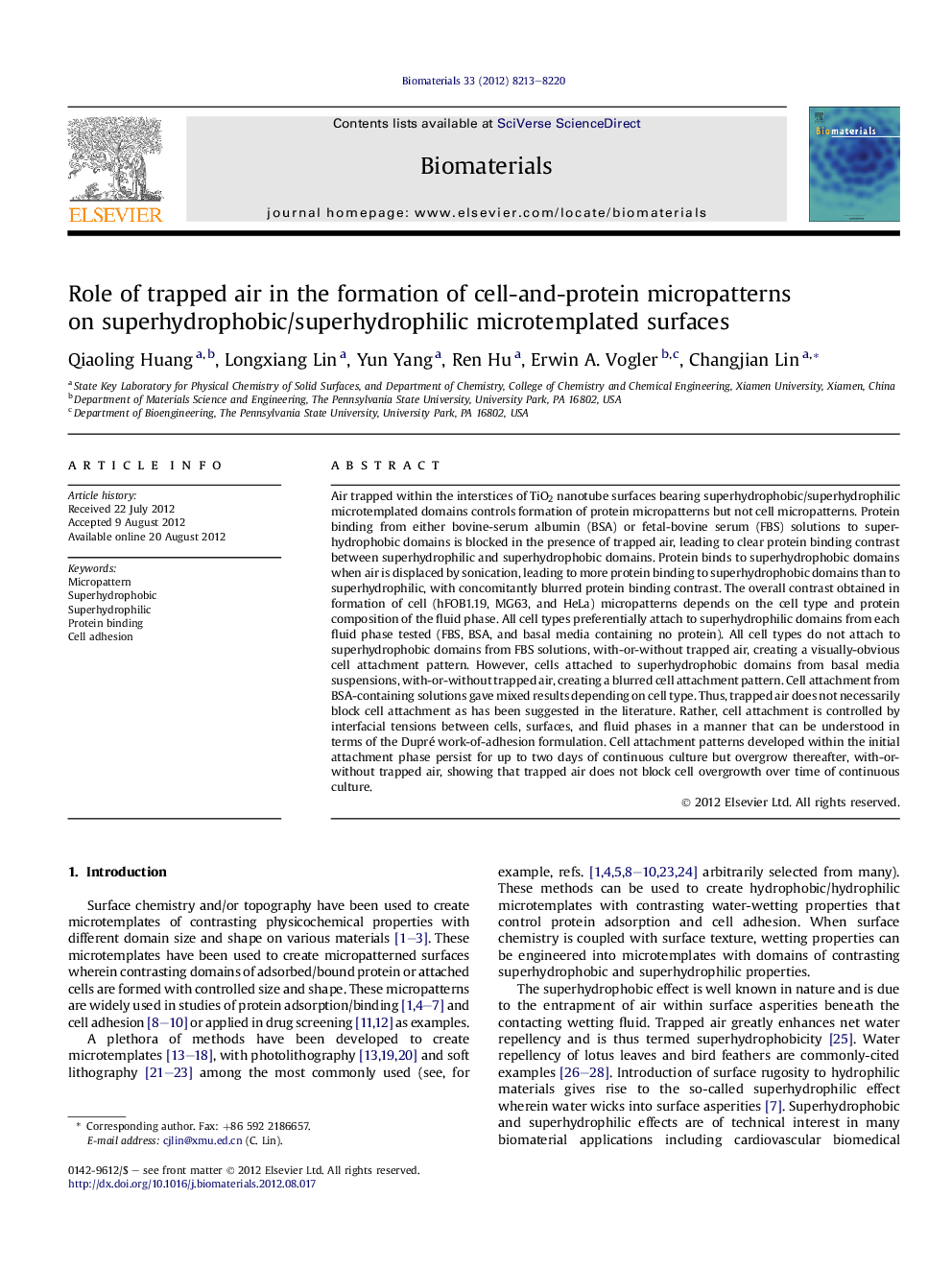| کد مقاله | کد نشریه | سال انتشار | مقاله انگلیسی | نسخه تمام متن |
|---|---|---|---|---|
| 6889 | 524 | 2012 | 8 صفحه PDF | دانلود رایگان |

Air trapped within the interstices of TiO2 nanotube surfaces bearing superhydrophobic/superhydrophilic microtemplated domains controls formation of protein micropatterns but not cell micropatterns. Protein binding from either bovine-serum albumin (BSA) or fetal-bovine serum (FBS) solutions to superhydrophobic domains is blocked in the presence of trapped air, leading to clear protein binding contrast between superhydrophilic and superhydrophobic domains. Protein binds to superhydrophobic domains when air is displaced by sonication, leading to more protein binding to superhydrophobic domains than to superhydrophilic, with concomitantly blurred protein binding contrast. The overall contrast obtained in formation of cell (hFOB1.19, MG63, and HeLa) micropatterns depends on the cell type and protein composition of the fluid phase. All cell types preferentially attach to superhydrophilic domains from each fluid phase tested (FBS, BSA, and basal media containing no protein). All cell types do not attach to superhydrophobic domains from FBS solutions, with-or-without trapped air, creating a visually-obvious cell attachment pattern. However, cells attached to superhydrophobic domains from basal media suspensions, with-or-without trapped air, creating a blurred cell attachment pattern. Cell attachment from BSA-containing solutions gave mixed results depending on cell type. Thus, trapped air does not necessarily block cell attachment as has been suggested in the literature. Rather, cell attachment is controlled by interfacial tensions between cells, surfaces, and fluid phases in a manner that can be understood in terms of the Dupré work-of-adhesion formulation. Cell attachment patterns developed within the initial attachment phase persist for up to two days of continuous culture but overgrow thereafter, with-or-without trapped air, showing that trapped air does not block cell overgrowth over time of continuous culture.
Journal: Biomaterials - Volume 33, Issue 33, November 2012, Pages 8213–8220